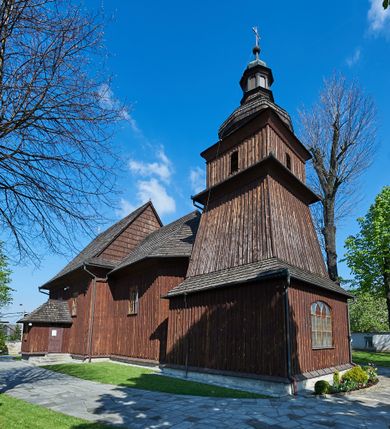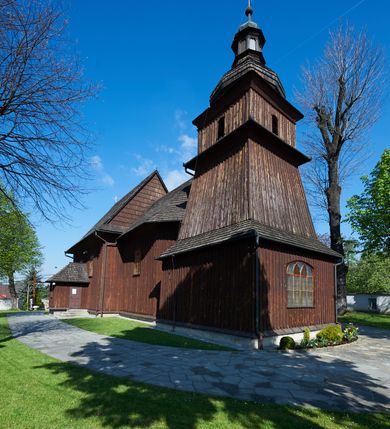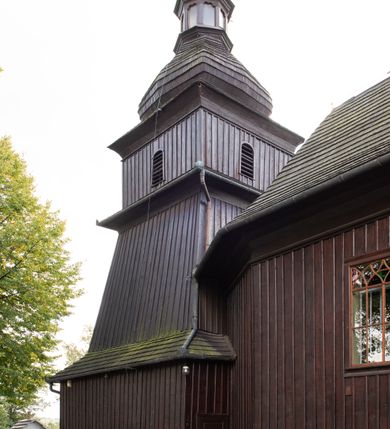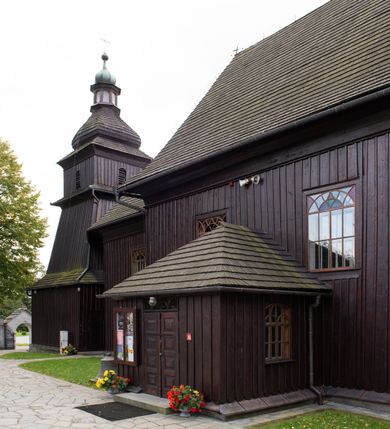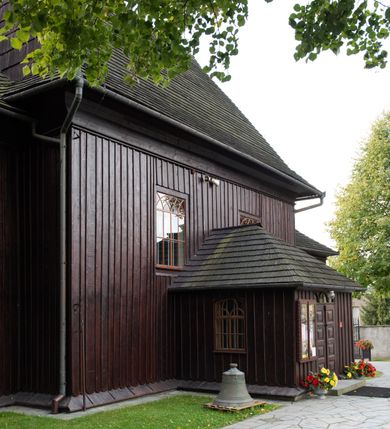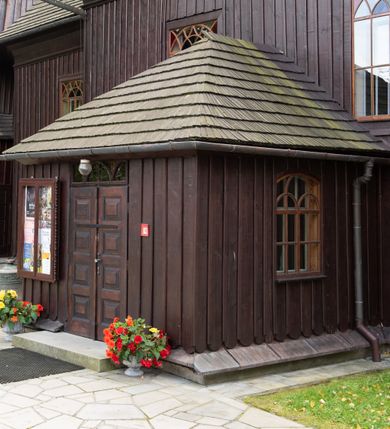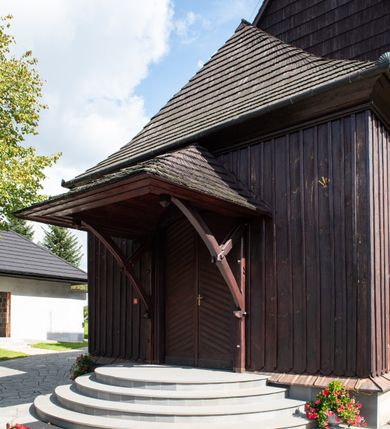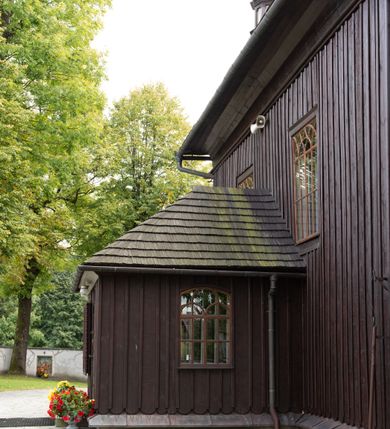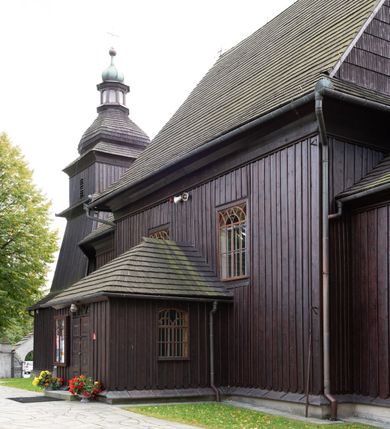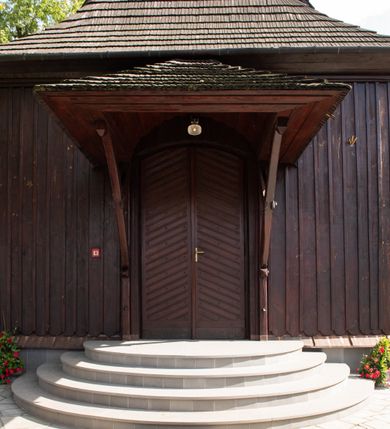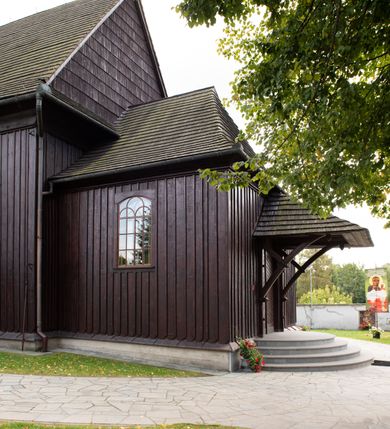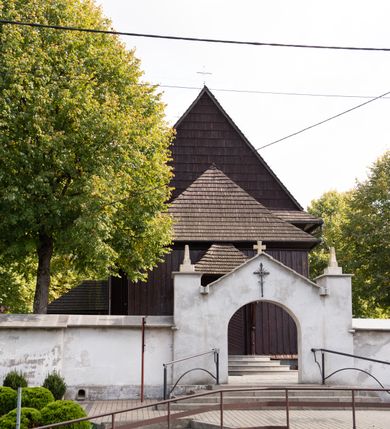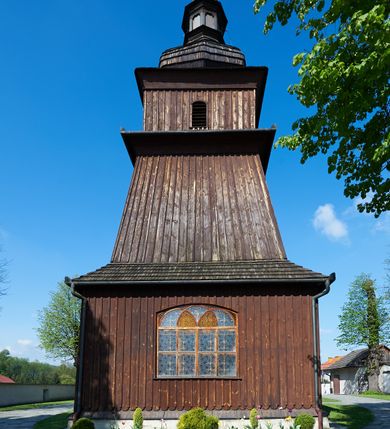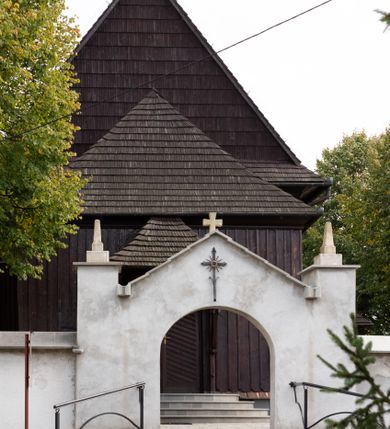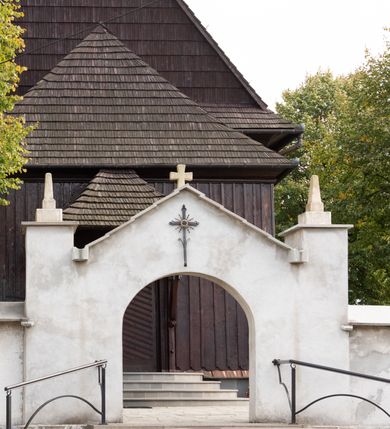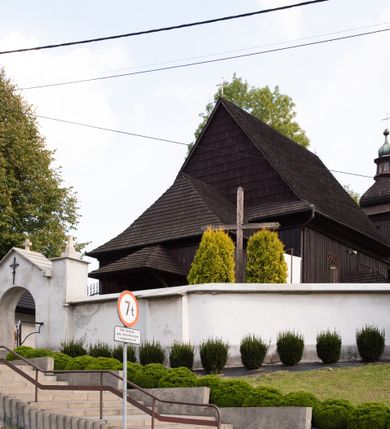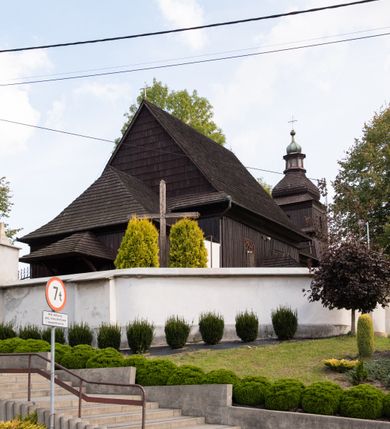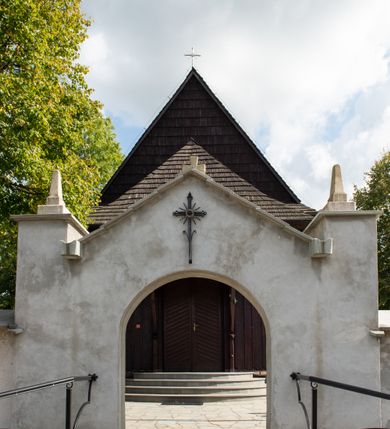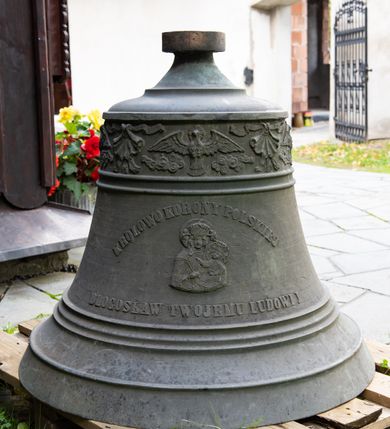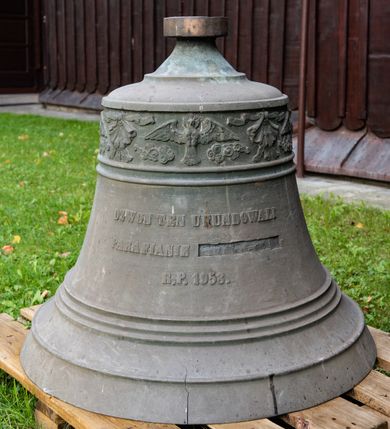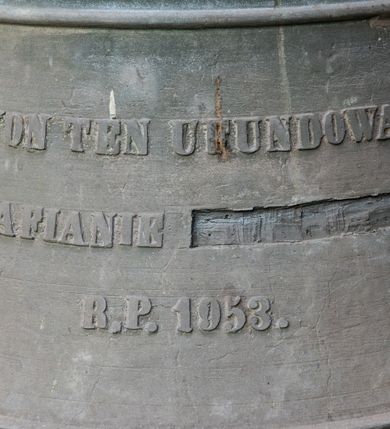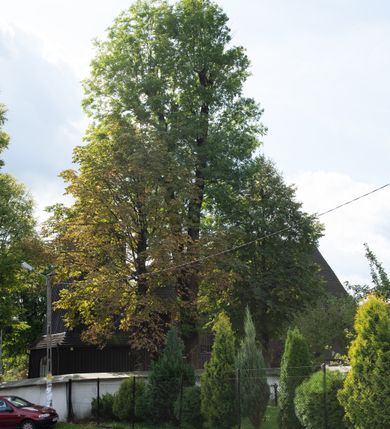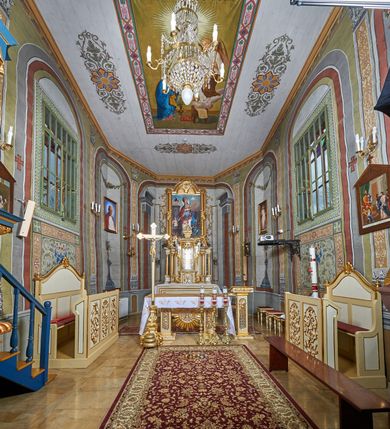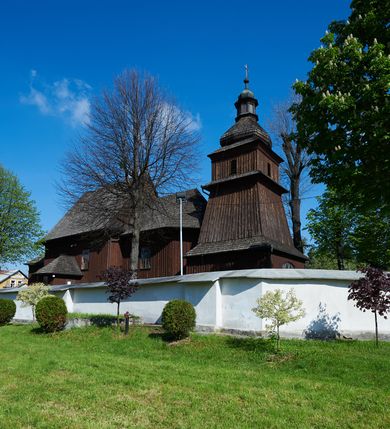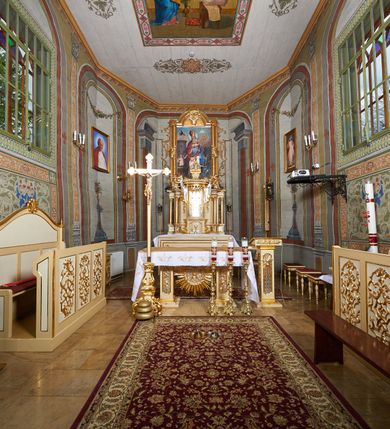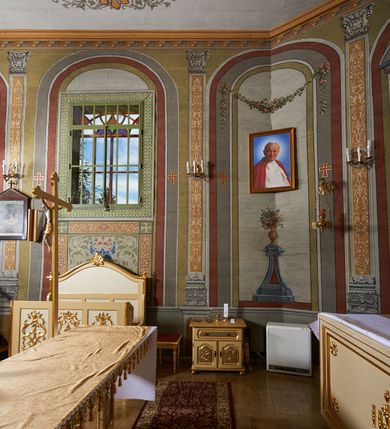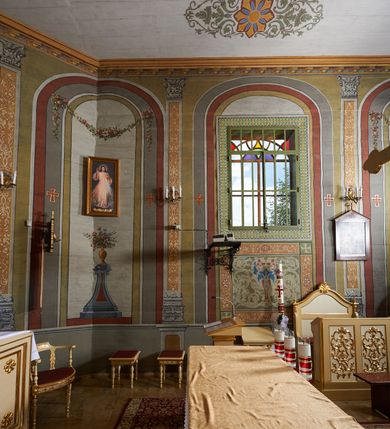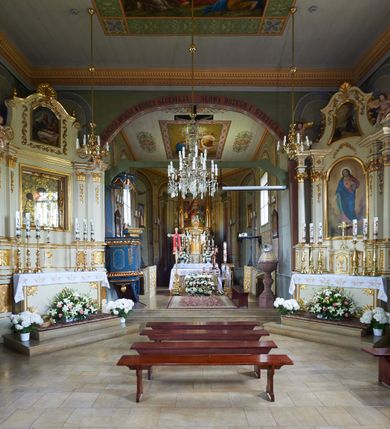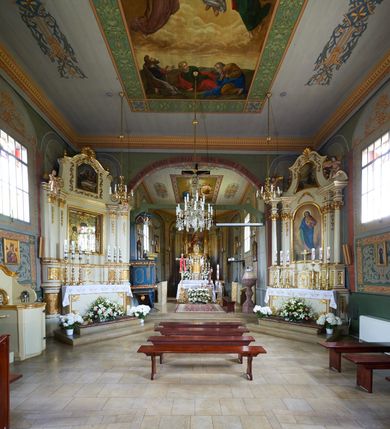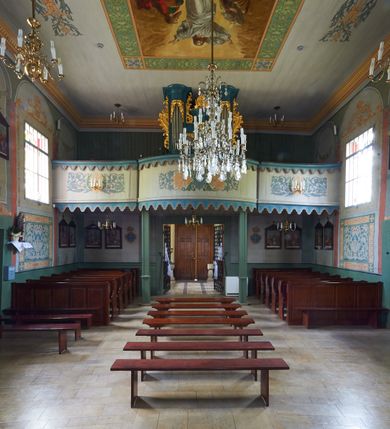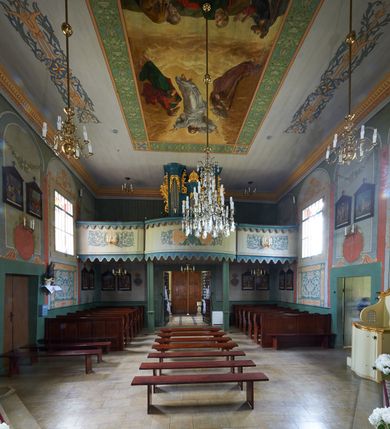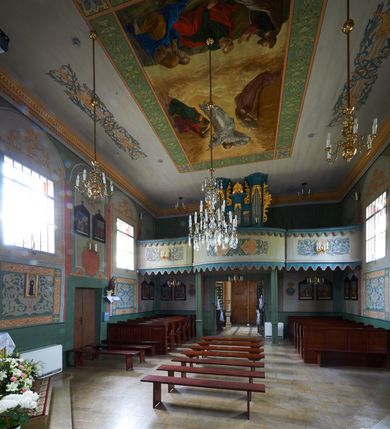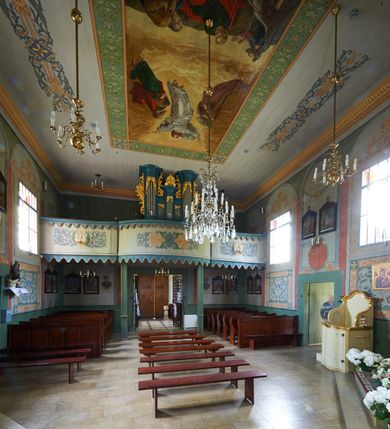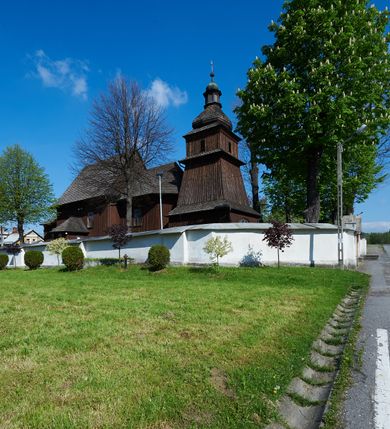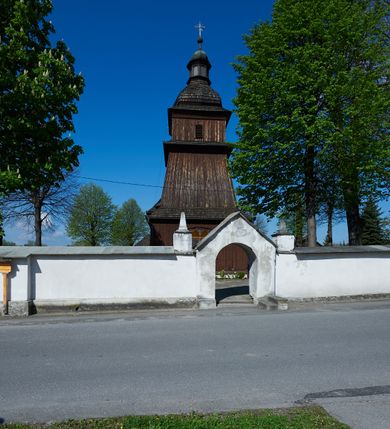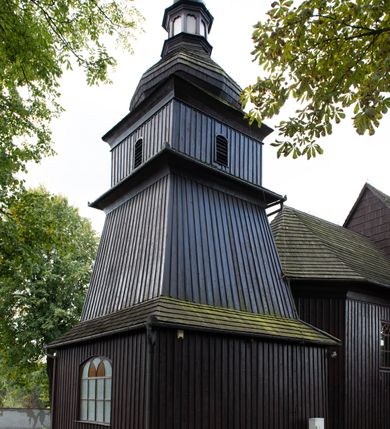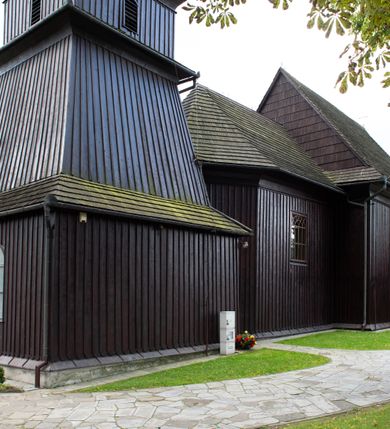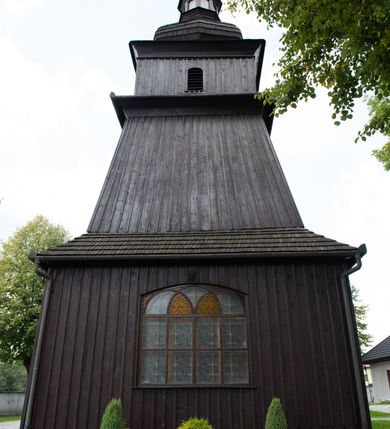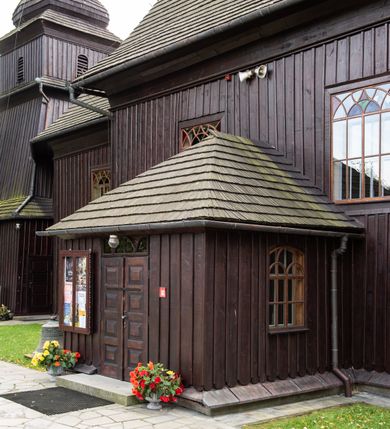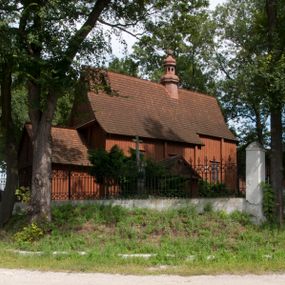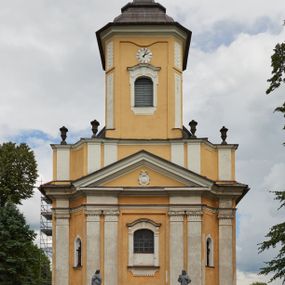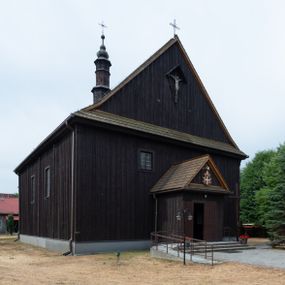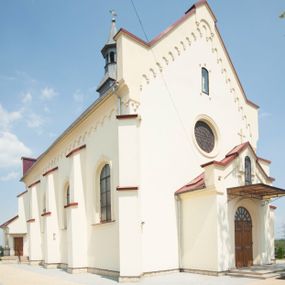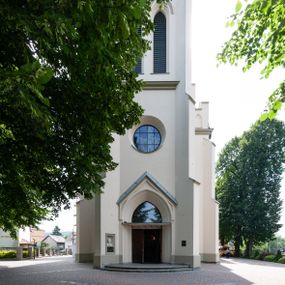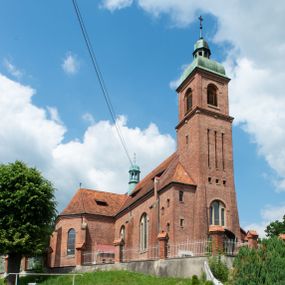
Church of Saint Erasmus of Formia in Barwałd Dolny
Identifier
DZIELO/16770
Amount
1
Catalogue note author
Maria Działo
History of work
The former church in Barwałd Dolny was mentioned as early as the 14th century, as the church of St. Andrew in Barwałd Średni. Another, wooden church of the Assumption of the Blessed Virgin Mary was built in 1512 and founded by Jan (around 1490–1566) and Wawrzyniec Komorowski, who later also took care of its equipment. For example, in 1532 the Komorowski brothers founded the church bell. The present Church of Saint Erasmus of Formia in Barwałd Dolny was built in 1782 (except for the tower from 1601, which was erected behind a chancel constituting an element of the previous church). The present church was founded by the family of Jan Biberstein-Starowieyski. The church was renovated several times in the 19th and 20th centurie. In the 1930s, a churchporch was added to the structure. The oldest furnishings of the church include: the painting of Madonna and the Child from the 16th century, a late gothic crucifix from the first half of the 16th century placed on a rood beam, the painting of the Man of Sorrows form 18th century, and a baroque tabernacle in the high altar, which perhaps originally constituted a fragment of dismantled and larger reredoses. Among the more valuable 19th-century furnishings of the temple, one should pay attention to the painting hanging on the eastern wall of the chancel with the image of the patron saint of the temple - St. Erasmus, bishop and martyr, created by the Bernardine painter - Dydak Baturyna (1877), side altars from the turn of the 18th and 19th centuries and a polychrome made around 1850. Outside, an epitaph plaque commemorating reverend Walerian Stanisławski, who died in 1682, is embedded in the cemetery wall. Since 1980, after the parish was taken up by Father Jan Dubiel, the general renovation of the church began, during which the rafter on the tower was replaced, roofing tile were replaced with shingles (1985–1990), the walls were boarded, the foundation of the church was made, the main door was changed and new stairs in front of the main entrance were built. Over the last few years, a number of conservation works have also been carried out on the interior of the temple, including the restoration of the polychrome, the high altar, side altars, pulpit, baptismal font, pews and choir-stalls.
Abstract
The present Church of Saint Erasmus of Formia in Barwałd Dolny was built in 1782 (except for the tower from 1601, which was erected behind a chancel constituting an element of the previous church). The family of Jan Starowieyski-Biberstein funded the church. The oldest furnishings of the church include: the painting of Madonna and the Child from the 16th century, a late gothic crucifix from the first half of the 16th century placed on a rood beam, the painting of the Man of Sorrows form 18th century, and a baroque tabernacle in the high altar, which perhaps originally constituted a fragment of dismantled and larger reredoses. Among the more valuable 19th-century furnishings of the temple, one should pay attention to the painting hanging on the eastern wall of the chancel with the image of the patron saint of the temple - St. Erasmus, bishop and martyr, created by the Bernardine painter - Dydak Baturyna (1877), side altars from the turn of the 18th and 19th centuries and a polychrome made around 1850. Outside, an epitaph plaque commemorating reverend Walerian Stanisławski, who died in 1682, is embedded in the cemetery wall. Wooden architecture of the 18th century was developing in three different trends: the first, in which stone baroque creations were imitated, the second, in which traditional compositions and patterns intertwined with baroque forms and the third, which includes the church in Brwałd Dolny - a continuation of old architectonic structures with some modern solutions. The rejection of the roof truss and connecting fragments system, commonly applied in the 18th century, which also resulted in the rejection of king post truss and contributed to the articulation of the volume, was a significant change. It further led to - like in the case of the temple in Brwałd Dolny - decreasing the height of roofs and increasing the height of walls. Formwork, which had not been applied earlier on, also appeared in the 18th century. Also windows, which, in the earlier period, were located only the South side of buildings, began to be located on on both sides of the chancel and nave. Their shape also lost the former gothic or renaissance form - in the third trend of the 18th century architecture they took the shape of a standing rectangle. A characteristic element of the 17th century architecture in the church in Brwałd Dolny is, on the other hand, the tower with inclined walls and overhanging chamber, characteristic and popular in the 16th and 17th century, which in its genesis also played a "defensive" role. The unusual location of the tower (it neighbors the chancel) results precisely from its earlier genesis.
Other works from this place
Similar works
By title
By category
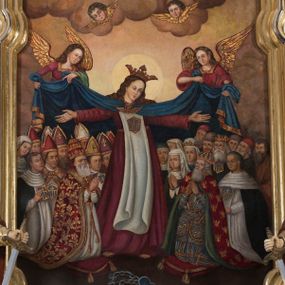
Our Lady of the Redemption of Slaves
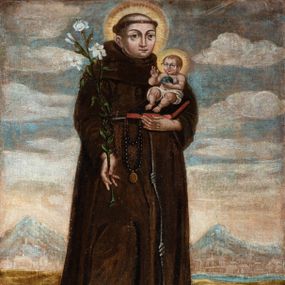
St. Anthony of Padua
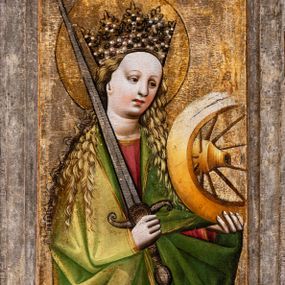
A front left wing of the old triptych of Our Lady of the Immaculate Conception
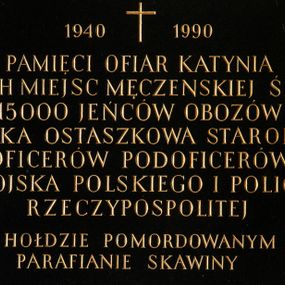
A plaque commemorating the victims of extermination
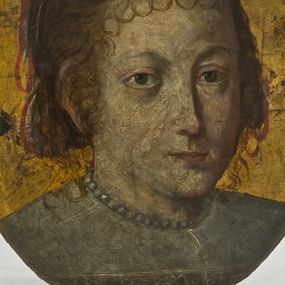
A portrait of Zofia Kochańska of the Swierczewski family
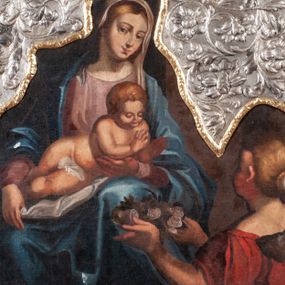
Adoration of Mary
How to cite?
Maria Działo, "Church of Saint Erasmus of Formia in Barwałd Dolny", [in:] "The Sacred Lesser Poland Heritage", 2026, source: https://sdm.upjp2.edu.pl/en/works/church-of-saint-erasmus-of-formia-in-barwald-dolny
